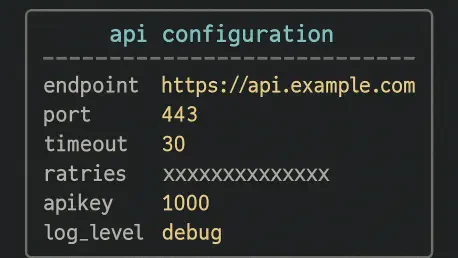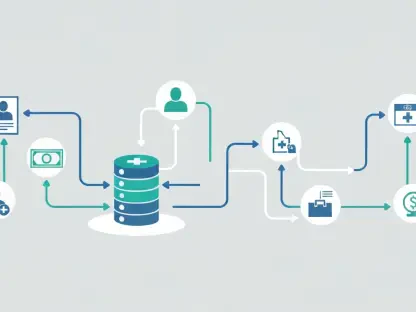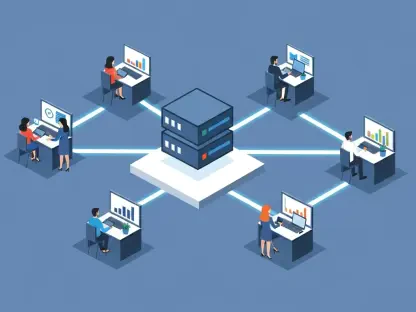What if a single misstep in server configuration could cost a company millions in downtime? In today’s high-stakes IT environment, where systems span across clouds, on-premises servers, and hybrid setups, the tools used to manage configurations are more critical than ever before. Command-Line Interfaces (CLI) and Application Programming Interfaces (API) have emerged as linchpins in ensuring that sprawling infrastructures remain stable, secure, and scalable. This exploration dives into how these tools transform system configuration management (SCM), offering precision and automation in an era where manual errors are no longer an option.
The Stakes of Modern Configuration Challenges
The importance of robust SCM cannot be overstated in an age where digital operations underpin nearly every industry. With organizations managing thousands of servers and devices, a small oversight can cascade into catastrophic failures, disrupting services and eroding trust. CLI and API stand as vital solutions, bridging the gap between human operators and automated processes to deliver consistency across complex environments. Their role in minimizing downtime and enhancing efficiency makes them indispensable for IT teams striving to keep pace with relentless demands.
Rising Demands for Advanced Management Tools
As businesses expand their digital presence, the complexity of managing configurations across diverse platforms has surged. From ensuring security in distributed systems to integrating with continuous integration pipelines, the challenges are multifaceted. CLI and API address these needs by enabling rapid deployment and real-time updates, aligning with trends like Infrastructure as Code (IaC) that prioritize automation. Their capacity to handle scale—whether for a handful of hosts or hundreds—positions them as critical components in maintaining operational agility.
Breaking Down the Strengths of CLI and API
The unique strengths of CLI and API in SCM lie in their ability to cater to both manual and automated workflows with precision. CLI tools, often developed with frameworks like ‘github.com/urfave/cli/v2’, empower operators to execute tasks such as deploying configurations or managing data in key-value stores like Consul with simple commands. Meanwhile, APIs provide the backbone for automation, using endpoints like GET /api/v3/config to retrieve settings or PUT /api/v3/deploy to initiate rollouts, ensuring seamless interactions across varied infrastructures. Together, they create a robust ecosystem for managing configurations dynamically.
Beyond basic operations, these tools support advanced functionalities like command execution through endpoints such as PUT /api/v3/command, allowing bash commands to be run on specific host groups for quick fixes or testing. Additionally, the adoption of templated configurations, inspired by systems like SaltStack, moves away from static YAML files to adaptable formats, addressing diverse operating system needs despite challenges like parsing complexities. These capabilities illustrate how CLI and API tackle real-world problems with practical, flexible solutions.
Expert Perspectives on Real-World Impact
Insights from the field reveal the transformative effect of CLI and API on SCM practices. Industry professionals note that templating, widely used in tools like Ansible, has become a standard for managing configuration diversity, a trend mirrored in custom SCM solutions. One IT manager shared a telling experience: initial skepticism about command execution features due to security concerns gave way to appreciation when rapid workarounds proved essential during a critical system update. Such anecdotes underscore how these tools adapt to practical needs, earning trust through demonstrated value in high-pressure scenarios.
Further reinforcing their impact, a recent survey by a leading tech research firm found that organizations using API-driven configuration management reported a 60% reduction in deployment errors. This data aligns with observations from developers who highlight how CLI simplifies repetitive tasks in continuous integration workflows. These combined voices paint a clear picture: CLI and API are not just technical utilities but game-changers in navigating the intricacies of modern IT landscapes.
Actionable Approaches for Implementation Success
For teams looking to harness CLI and API in SCM, a structured approach can maximize benefits. Start by configuring a user-friendly CLI tailored for continuous integration tasks, defining clear parameters for deployments and integrating with data storage solutions like Consul for streamlined operations. Simultaneously, prioritize API security by implementing robust authentication layers, such as X509 certificates and token validation through systems like Vault, to safeguard sensitive updates and commands.
Another key strategy involves optimizing command execution by limiting its use to specific scenarios like health checks on new hosts, employing filesystem flags to prevent redundant operations. Transitioning to templated configurations also offers flexibility; address YAML parsing issues by shifting validation tasks to schedulers, aligning with IaC best practices. Finally, customize execution order with features like a ‘top’ flag to prioritize critical files, enhancing deployment speed for initial setups. These steps provide a roadmap for integrating CLI and API effectively into existing workflows.
Reflecting on the Journey and Next Steps
Looking back, the evolution of CLI and API in system configuration management marked a pivotal shift in how IT infrastructures are maintained. Their ability to blend human control with automated precision addressed pressing challenges of scale and security that once plagued digital operations. The stories of hesitation turning into reliance, coupled with hard data on error reduction, paint a vivid picture of tools that adapt to real-world demands.
Moving forward, the focus shifts to refining these tools for even greater integration with emerging technologies. Exploring ways to embed machine learning for predictive configuration adjustments or enhancing cross-platform compatibility stands as promising avenues. Teams are encouraged to experiment with these innovations, leveraging the solid foundation built by CLI and API to anticipate and solve tomorrow’s challenges with confidence.









